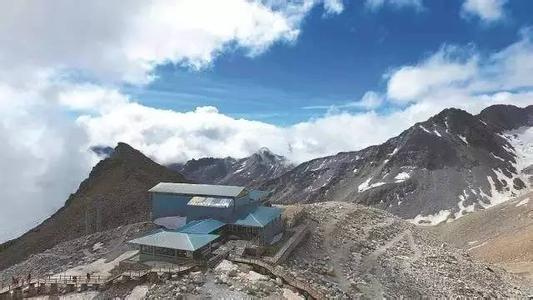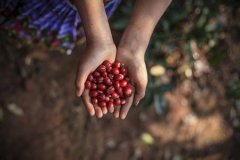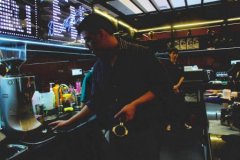A brief introduction to the description of flavor and aroma characteristics of Rwanda boutique coffee beans with excellent evenness

Coffee fruits need to be transported to the processing plant as soon as possible after picking, but due to lack of facilities in the country, it is impossible to process the fruits in the first time. The fruits accumulate together after being picked, and lack of ventilation will continue to accelerate mold and rot. The rotten fruits will affect the quality of coffee and appear defective flavor.
Rwanda has made great progress in coffee production and processing in recent years. Coffee cherries are first picked by hand; coffee production cooperatives have been set up throughout the country to provide technical guidance to coffee farmers; coffee farmers send coffee processing stations as soon as possible after picking for washing and screening, selecting ripe and high-quality coffee cherries for processing Rwanda coffee is absolutely high-quality in its washed Arabica bean form. As far as Africa is concerned, its coffee industry stands out because the country thrives mainly on producing the best possible coffee beans. Rwandan coffee is gaining increasing popularity on the international market.
The mission of the Rwandan Coffee Association is to manage and supervise the operation of the Rwandan coffee industry from production to marketing. The recently revised mission focuses on policy formulation and implementation, with greater emphasis on efforts to improve professionalism and marketing in the coffee industry. Since its inception, the Rwandan Coffee Association has done a good job of promoting Rwandan coffee culture and influence.
Kigali is located in the middle of Rwanda. It was founded in 1907 and is the political, economic and cultural center of the whole country. It has an area of 730 square kilometers and a population of 1.13 million (2013), of which 70% are in the suburbs. Kigali has a pleasant climate, clean city appearance, orderly traffic and good public security. It is considered one of the safest capitals in Africa. In 2008, it became the first African city to win the "United Nations Habitat Award". Rwanda is mountainous and has the title of "Country of Thousand Hills". The whole country is situated at high altitudes: the lowest point, the Luziji River, is 950 metres above sea level. The central west is dominated by mountains, part of the Albertine Rift Range, which in turn is part of the Great Rift Valley of East Africa and runs north to south along Rwanda's western border. The highest mountain in the country is located in the volcanic chain of the Virunga Mountains in the northwest, of which Karisin is 4507 meters higher than the volcano and is the highest geographical point in Rwanda. The mountains in the western part of the country, located in the Albertine Rift Mountain Forest Ecological Zone, range from 1500 to 2500 metres above sea level. Central Rwanda is dominated by rolling hills, while the eastern border areas consist of savannas, plains and swamps. Rwanda's mineral deposits include tin, tungsten, niobium, tantalum, beryl and gold. Tin reserves are about 100,000 tons. Peat reserves are estimated at 30 million tons. Lake Kivu has natural gas reserves of about 60 billion cubic meters. Nyakabango tungsten mine is the largest in Africa.
Rwandan coffee, in its washed Arabica bean form, is of absolute quality. As far as Africa is concerned, its coffee industry stands out because the country thrives mainly on producing the best possible coffee beans. Rwandan coffee is gaining increasing popularity on the international market.
The mission of the Rwandan Coffee Association is to manage and supervise the operation of the Rwandan coffee industry from production to marketing. The recently revised mission focuses on policy formulation and implementation, with greater emphasis on efforts to improve professionalism and marketing in the coffee industry. Since the establishment of the Rwanda Coffee Association, it has carried forward the Rwandan coffee culture and promoted the influence of Rwandan coffee. Rwanda is a small African country, and the local people are also relatively poor. However, it produces very good straight coffee, which is different from its neighbors Kenya and Ethiopia. Rwanda's coffee is mainly round bourbon. The taste is not as prominent as Ethiopia and Kenya, but the uniformity is excellent.
Rwanda Karnogi coffee is grown and harvested by local small farmers. Gitesi Washing Station is responsible for washing and processing. Although this is a relatively young coffee processing plant, it has always been famous for producing high quality Rwandan coffee due to its serious and responsible working attitude, good processing equipment and standardized processing procedures. Rwanda Karnogi coffee won the first place in the 2013 CoE Arward Winner. The coffee bean shape is a typical bourbon shape, round beans, crystal clear, The treatment is very clean, the residual silver skin is very small, the color is green, suitable for medium and light baking, and the beans are placed in 10 seconds at the end of the explosion.
Rwanda has tin, tungsten, niobium, tantalum, beryl, gold and so on. Tin reserves are about 100,000 tons. Peat reserves are estimated at 30 million tons. Lake Kivu has natural gas reserves of about 60 billion cubic meters. Nyakabango tungsten mine is the largest tungsten mine in Africa.
forest
Forest covers an area of about 620,000 hectares, accounting for 29% of the country's area, and is one of Rwanda's important natural resources. [3]
plant
Rwanda has a mountainous ecology of one third in prehistoric times. Naturally occurring plants are largely confined to the country's three national parks, while terraced agriculture dominates the rest of the country. Newgway Forest is the largest forest in existence, with 200 species of trees, orchids and begonias. Rwanda Volcanoes National Park is dominated by bamboo, most of the rest is moorland, and there are small areas of trees. Akagera National Park is a savanna ecosystem, all plants in order to Acacia the most. [3]
animal
Rwanda's national parks also contain rare or endangered plant species such as cattail trees and Guinea cockscomb orchids. The largest number of large mammal species are also found in the three national parks, which are also designated protected areas. Akagera National Park is home to typical savannah fauna including giraffes and elephants, while Volcano National Park is home to about a third of the world's mountain gorillas. Newgway Forest Park is home to 13 primate species, including chimpanzees and Ruwenzori arboreal colobus monkeys, of which up to 400 live in groups, more than any other primate in Africa. [3]
Rwanda has 670 bird species, varying from east to west. To the west, 280 species have been found in the Newgway Forest, of which 26 species, including the Ruwenzori banjo and the partridge, are endemic to the Albertine Rift. Eastern Rwanda is home to savanna birds such as the aconitine shrike and species such as storks and cranes that habitually live in swamps and lake areas
Rwanda has been growing coffee since colonial times. Although coffee is the main crop, the quality of coffee produced in Rwanda is not outstanding. The status of coffee in the world is low and few people pay attention to it. Rwanda grows mostly bourbon coffee varieties. Rwanda, known as the "country of thousands of hills", has a high altitude mountain environment, fertile volcanic soil and abundant rainfall, which is conducive to the growth of coffee trees. The advantages of varieties combined with excellent natural conditions should have produced high-quality coffee, but why is the coffee quality not satisfactory? The reason lies in the later processing links. Improper processing will reduce the quality of coffee and sacrifice many good flavors in vain. Harvesting, planting, processing, grading, transportation and other links will directly affect the quality of coffee beans, in which the lack of control in a certain link will become a stumbling block to make good coffee.
Important Notice :
前街咖啡 FrontStreet Coffee has moved to new addredd:
FrontStreet Coffee Address: 315,Donghua East Road,GuangZhou
Tel:020 38364473
- Prev

Full-flavored Ethiopian Banchi Premium Coffee Beans Grind Roast Degree Treatment Method
The estate is owned by Gashaw Kinfe Desta and is very close to Geisha town. Geisha is also the birthplace of the now famous Geisha variety, which is currently common in Panama, Costa Rica, Colombia and Guatemala. It is also because of the popularity of Geisha species that Gesha has been re-emphasized in its homeland. Congka
- Next

Round and plump Rwandan fine coffee beans Origin and development History and culture Introduction
outRwanda has been growing coffee since colonial times. Although coffee is the main crop, the quality of coffee produced in Rwanda is not outstanding. The status of coffee in the world is low and few people pay attention to it. Rwanda grows mostly bourbon coffee varieties. Rwanda, known as the country of thousands of hills, has a high altitude mountain environment, fertile volcanic soil and abundant rainfall, which are conducive to
Related
- Detailed explanation of Jadeite planting Land in Panamanian Jadeite Manor introduction to the grading system of Jadeite competitive bidding, Red bid, Green bid and Rose Summer
- Story of Coffee planting in Brenka region of Costa Rica Stonehenge Manor anaerobic heavy honey treatment of flavor mouth
- What's on the barrel of Blue Mountain Coffee beans?
- Can American coffee also pull flowers? How to use hot American style to pull out a good-looking pattern?
- Can you make a cold extract with coffee beans? What is the right proportion for cold-extracted coffee formula?
- Indonesian PWN Gold Mandrine Coffee Origin Features Flavor How to Chong? Mandolin coffee is American.
- A brief introduction to the flavor characteristics of Brazilian yellow bourbon coffee beans
- What is the effect of different water quality on the flavor of cold-extracted coffee? What kind of water is best for brewing coffee?
- Why do you think of Rose Summer whenever you mention Panamanian coffee?
- Introduction to the characteristics of authentic blue mountain coffee bean producing areas? What is the CIB Coffee Authority in Jamaica?

